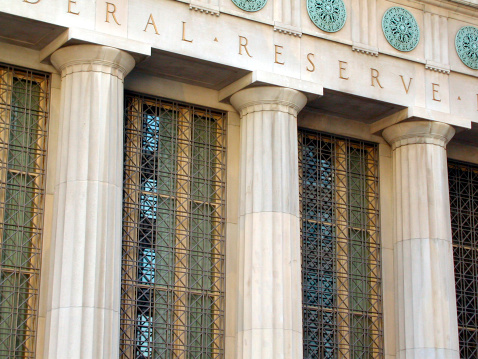This post may contain links from our sponsors and affiliates, and Flywheel Publishing may receive
compensation for actions taken through them.
The Beige Book was released by the Federal Reserve at 2:00 p.m. Eastern on Wednesday, and what was often ignored may have been given almost no media coverage at all. After all, Janet Yellen was testifying, the Greeks were rioting and CNBC had its key Delivering Alpha conference, which twisted moves in many individual stocks.
As a reminder, the Fed site noted that the Beige Book was prepared at the Federal Reserve Bank of Atlanta and was based on information collected before July 3, 2015. This document is also a summary of comments received from businesses and other contacts outside the Federal Reserve — it is not commentary on the views of Federal Reserve officials.
All 12 Federal Reserve Districts showed that economic activity expanded from mid-May through June.
Districts indicated moderate growth in nonfinancial business services and the transportation activity was mixed. It may seem unsurprising that manufacturing activity was uneven after having seen prior industrial production reports.
Improvements were also seen in consumer spending, but this varied from district to district and some noted strong dollar weakness. Districts reported that auto sales were up in all but the St. Louis district. Tourism was broadly higher, except in New York.
ALSO READ: 10 Cities Where Incomes Are Growing (and Shrinking) the Fastest
Oil and natural gas drilling declined in Dallas, Cleveland, Minneapolis and in Kansas City. Capital spending in energy was down in some districts.
Prices for inputs and finished goods were effectively stable since the prior Beige Book report. Demand for loans was higher in New York, Atlanta, Richmond and Dallas. Most districts noted modest wage pressures.
By the title of this report, it seems as though no one cared. After all, we have already seen lots of Fed data. with more coming later in the week.
The Average American Is Losing Their Savings Every Day (Sponsor)
If you’re like many Americans and keep your money ‘safe’ in a checking or savings account, think again. The average yield on a savings account is a paltry .4% today, and inflation is much higher. Checking accounts are even worse.
Every day you don’t move to a high-yield savings account that beats inflation, you lose more and more value.
But there is good news. To win qualified customers, some accounts are paying 9-10x this national average. That’s an incredible way to keep your money safe, and get paid at the same time. Our top pick for high yield savings accounts includes other one time cash bonuses, and is FDIC insured.
Click here to see how much more you could be earning on your savings today. It takes just a few minutes and your money could be working for you.
Thank you for reading! Have some feedback for us?
Contact the 24/7 Wall St. editorial team.


